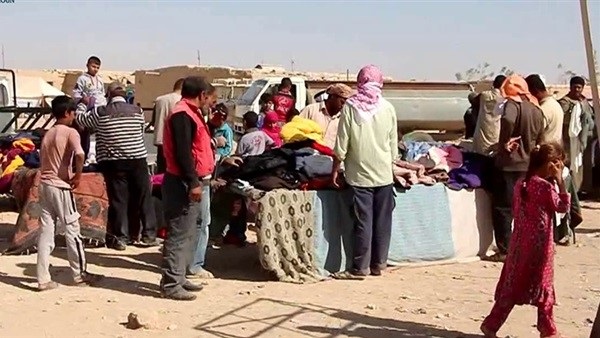Iraq sets time limit for ending file of displaced: Most prominent obstacles

Iraq has recently shown increasing interest in the file of
the displaced and their return to their homes. In a new step, President Abdullatif
Jamal Rashid on Tuesday stressed the need to end the file within a time limit.
According to a statement from the presidency’s media office,
which was reported by the Iraqi News Agency (INA), President Rashid received
the director of the United Nations Human Settlements Program (UN-Habitat) in
Iraq, Wael Al-Ashhab, and his accompanying delegation at the presidential
palace in Baghdad.
During the meeting, Rashid stressed “the necessity of
concerted and intensified efforts to end the file of the displaced within a
time limit that does not exceed the end of the year 2024, and work to ensure a
safe and stable return to their cities and homes with the provision of basic
services.”
He pointed out that “this will be achieved through
strengthening cooperation and joint coordination between government agencies
and international organizations concerned with the displaced.”
Meanwhile, Ashhab and members of the UN delegation reviewed
the progress of UN-Habitat's work in the country and the future
plans set to resolve this issue by returning all the displaced to their
homes.
Thousands of displaced
In July, Iraq’s Ministry of Migration and Displacement
announced the return of 189 displaced Yazidis to their areas of residence in the
district of Sinjar, Nineveh Governorate, after they were displaced byISIS
during its invasion of the region in 2014.
In a statement, Migration Minister Evan Faeq Gabro said that
“189 displaced Yazidi persons have returned from the displacement camps in
Dohuk Governorate to their areas of original residence in the Sinjar district
of Nineveh Governorate,” confirming that “the ministry's cadres are continuing
to register the displaced families who wish to return,” according to INA.
In May, the ministry issued statistics on the current number
of camps and the number of displaced people living in them.
INA quoted the director of the branch department in the
ministry, Ali Abbas, as saying, “The number of camps in the Kurdistan region is
26, including 16 camps in Dohuk, six camps in Erbil, and four camps in
Sulaymaniyah.”
Abbas added that the displaced people who live in these
camps number about 36,000 families, noting that “most of the displaced people
are from the Sinjar district in Nineveh Governorate, as well as from the
governorates of Anbar, Salah al-Din and Diyala.”
Complex file
Iraqi political analyst Yassin Aziz said in exclusive
statements to the Reference that the file of the displaced is very complex, as
it transcends the human dimension to a political dimension encapsulated in a
security dimension, and the handling of this file is taking place very slowly
amid procrastination by influential parties that seem stronger than the
official authority in some areas, which keeps the government's plans stalled.
Aziz considered that setting any date to end or close the file
of the displaced will not be easy, and matters remain linked to the extent of
the strength and control of the official executive institution over areas whose
residents have been displaced for political, security and sectarian dimensions,
but without achieving this, the matter will take quite a long time. He noted
that previous agreements were made, especially between the Kurdistan regional
government and the federal government, given that most of the displaced are
inside the Kurdistan region, but the lack of a strong mechanism for
implementing plans and agreements prevents adherence to the timings set by the
authorities.
Regarding what international support represents for the
completion of the file, Aziz said that international support exists, adding that
UN-Habitat and other international organizations are well prepared, but they need
a secure atmosphere in order to operate, which still is not available in the
form that the international organization wants, especially in some regions,
including in the Bagdad belt.







